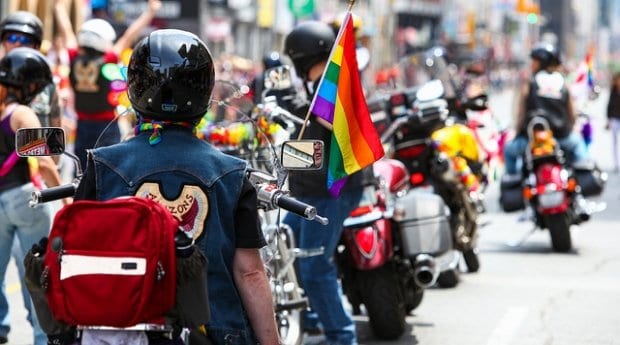Logan has been going to Pride for almost six years; every year, he says, it has been difficult, if not impossible, to participate in the festival.
As a wheelchair user, Logan, who declined to give his last name, is limited in where he can go in the crowded streets that surround the parade route.
“It’s ridiculously hard because people cut in front of you so much,” he says, adding that he has to be careful how he moves in his wheelchair so as not to hit people.
While there are risers set up along the parade route for disabled people, Logan claims that no one monitors who is using them; as a result, they are often crowded with abled people trying to get a better view. He says he knows he is not the only disabled guest who has these experiences.
He voiced his frustrations at the 2014 Pride Toronto annual general meeting, where at least one march organizer and the board co-chair agreed there could be more done to make the event accessible for disabled people.
Christin Milloy, one of the team leads of the 2014 Trans Pride march, said that they encountered difficulties booking enough American Sign Language (ASL) interpreters or having enough resources to be fully accessible for the event. “If we were guaranteed that all our events would be accessible to deaf and hard-of-hearing people with ASL interpreters, that would be a huge improvement.”
Shelley Craig, the co-chair of the Pride Toronto board, said that it made her feel sad to hear about Logan’s struggles and that she was glad he spoke up. “I think what it illustrates is that we have so much more work to do.”
Pride Toronto has a volunteer-led accessibility committee, which Craig commends for their work. The board has also budgeted for a paid position dedicated to accessibility to be hired in 2015. However, the specifics of the position will not be determined until a new executive director is hired.
Some of Logan’s concerns go beyond the powers of Pride Toronto. Along the parade route there are only two wheelchair-accessible TTC stations, Bloor-Yonge and Dundas. The TTC website states that all its subway stations should have elevators by 2025.
For Logan, it’s important to speak up so that finally he and others can participate fully in Pride. “Noticing how hard it is to get around in a wheelchair or on crutches or on a cane or any of those mobility devices people use — it’s really hard.”


 Why you can trust Xtra
Why you can trust Xtra


